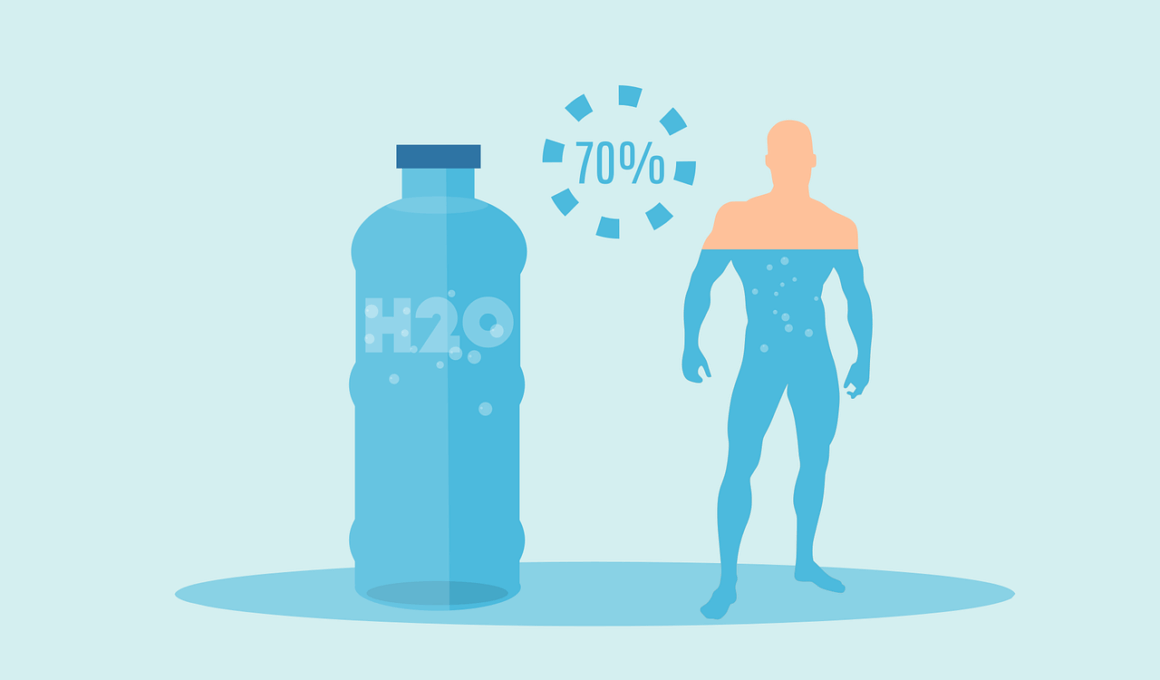Hydration Tips for Cyclists: Maintaining Peak Performance
Proper hydration is crucial for cyclists seeking to maintain peak performance during rides. Dehydration can lead to reduced endurance, decreased strength, and longer recovery times. Therefore, understanding when and how to hydrate is essential. Cyclists should aim to begin hydration even before their rides by drinking water consistently throughout the day. A general guideline is to consume about 500-750 mL of water in the hours leading up to the ride. Furthermore, monitoring urine color can help assess hydration levels; light yellow indicates proper hydration. During rides, especially long cycling sessions, athletes should consume fluids regularly. A starting point is to drink around 200-300 mL every 15-20 minutes. It’s critical to pay attention to personal needs and conditions; heat, humidity, and ride intensity all influence hydration rates. Additionally, incorporating electrolyte-rich beverages is pivotal during extended rides. Electrolytes help maintain fluid balance and prevent muscle cramps. Therefore, experimenting with different beverages during training can develop personal preferences for race day. This proactive approach can significantly impact overall performance and well-being.
Hydration Before the Ride
A significant part of maximizing cycling performance involves the hydration strategy employed prior to the ride. Celebrated among benefits of pre-hydration are improved endurance and mental clarity. About two hours before embarking on a long ride, cyclists should focus on consuming fluids. They should target a fluid intake summing around 500 mL, allowing adequate time for their bodies to absorb the liquids. Additionally, incorporating hydrating foods, such as fruits and vegetables, can supplement fluid intake. Beverages such as coconut water or sports drinks can provide essential electrolytes, beneficial for performance. Mixing flavors can also enhance acceptance of pre-ride fluids; many cyclists respond well to options like flavored water. Thus, experimenting to discover preferred options encourages consistent hydration practices. Ensuring adequate hydration is equally important for cognitive function; even mild dehydration can diminish focus and reaction times. Aim for light, non-caffeinated drinks to avoid diuretics, which can lead to increased fluid loss. Pre-ride hydration should be tailored to personal needs to establish an effective hydration regimen. Setting reminders can encourage pre-ride hydration, fostering improved overall cycling experiences.
Your hydration strategy doesn’t end once you hit the cycling trail; it must also be adaptable and effective during the ride. During intense rides, proper hydration plays a vital role in maintaining energy levels and performance. Cyclists should plan to consume fluids at regular intervals, generally targeting every 15 to 20 minutes. The amount will vary based on individual sweat rates, temperature, and ride intensity. Monitoring thirst levels is crucial, but it is advisable not to wait until feeling thirsty to drink. Creating a habit of sipping small amounts consistently can help ensure hydration remains optimal. Many cyclists find using hydration packs or bottles conveniently attached to their bikes helps maintain regular water intake. Electrolyte drinks, rich in sodium and potassium, are often beneficial during prolonged rides, as they can replenish lost minerals due to sweating. It’s also wise to practice drinking from your bottles during training sessions to enhance skills required during more challenging rides. Refilling can be achieved at planned stops, thus knowing available refueling stations is beneficial. Implementing these fluid strategies ensures hydration levels remain sufficient for optimum cycling performance.
Hydration During Intense Rides
Following a well-planned hydration strategy can further enhance performance throughout intense cycling sessions. Compression cycling shorts or breathable jerseys to wick away sweat assist in cooling, preventing overheating. Sweat loss varies among individuals, so determining personal sweat rates allows for tailored hydration strategies. Some cyclists may benefit from maintaining a hydration diary to keep track of fluid intake and personal performance levels. On hot days, cyclists could experience increased sweat loss; therefore, electrolyte-rich drinks help maintain the balance effectively. Many athletes often prefer to consume drinks that contain carbohydrates for quick energy. These drinks range from simple sports drinks to homemade concoctions featuring fruits like watermelon or citrus. Recovering lost electrolytes quickly minimizes detrimental effects while cycling. In races or long rides, establishing a rhythm around water intake can boost performance significantly. Additionally, during breaks, consider eating salty snacks or electrolyte tablets to help restore balance. Limiting caffeine products is often wise during long rides, as they may lead to dehydration. In preparation for events, consistency with hydration strategies during training ensures that cyclists can adopt effective routines for race day.
After completing your cyclical endeavor, proper hydration does not diminish in importance. Post-ride hydration plays a fundamental role in recovery and future performance. Immediately after a ride, it is vital to replenish lost fluids and electrolytes. Cyclists should aim to drink approximately 500 mL of water or even more based on the intensity and duration of the ride. Moreover, within an hour post-ride, consuming a combination of water and a snack that includes carbohydrates and proteins supports recovery. Foods like bananas, energy bars, or recovery smoothies offer excellent options to restore energy levels. Another essential aspect of post-ride hydration is monitoring urine color, as it indicates how much fluid is needed. Darker urine may indicate dehydration and could require additional fluids. Many cyclists find that consuming isotonic drinks helps restore vital electrolytes faster. Planning hydration after rides prepares cyclists to perform well in subsequent sessions. Keeping an easily accessible beverage like a recovery shake in the fridge can promote better post-ride fluid intake; easy is key. The more efficient recovery routine aligns hydration choices and overall cycling strategies to achieve continuous improvement.
Importance of Electrolytes
The role of electrolytes in a cyclist’s hydration strategy cannot be overstated. Electrolytes are essential for regulating hydration, nerve function, and muscle contraction. Cyclists, especially those engaging in prolonged activities, must be cognizant of their electrolyte intake. Sodium, potassium, calcium, and magnesium are the primary electrolytes to monitor. Sweating during rides results in the loss of these vital minerals, which can compromise performance. To counter this, incorporating electrolyte replenishment into your hydration strategy is beneficial. Options like electrolyte tablets or specialized sports drinks are readily available. Many cyclists also enjoy homemade drinks featuring coconut water or a pinch of salt added to water for a natural alternative. Understanding personal sweat rates can guide electrolyte needs, as some may lose more than others. During hot conditions or intense exercise, consider cycling with electrolyte-rich beverages readily available. Consuming adequate electrolytes during rides helps prevent cramping and enhances recovery. It’s essential during rides to benchmark against experienced cyclists to find suitable drinks. These practices help create a well-rounded approach toward hydration, vital for optimizing performance throughout the cycling experience.
In conclusion, effective hydration strategies are indispensable for cyclists striving to maintain peak performance. Proper hydration before, during, and after rides ensures that cyclists can push their limits while enjoying the sport. Understanding individual hydration needs, factors such as temperature, duration, and intensity play vital roles, should not be neglected. Monitoring personal sweat rates and adjusting fluid intake accordingly provides a personalized approach that maximizes efficiency. Utilizing electrolyte drinks throughout longer rides is also essential, further promoting better endurance and preventing fatigue. Post-ride hydration is just as important; investing in recovery routines assists in preparing for future rides. Cyclists should encourage hydration habits that become second nature, addressing fluid intake as part of overall training regimens. Experimentation with drinks and strategies leads to establishing what works best for the individual. Seeking advice from coaches and experienced cyclists may offer additional insights into effective practices. Recognizing that optimization happens over time is key to excellence. A strong hydration strategy is vital in any successful cyclist’s performance journey, one that champions their health and achievements while riding.


